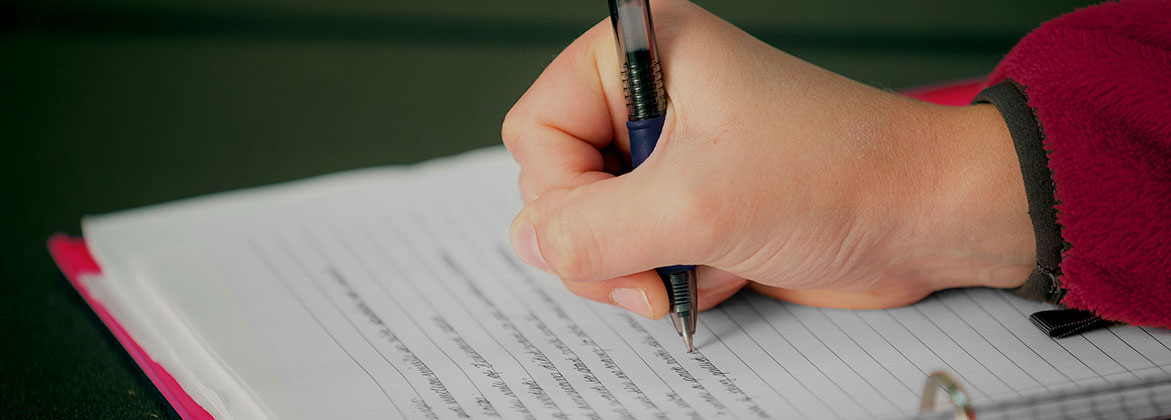The Definition Essay
A definition essay is one that explains a term, either by defining what it means or by clarifying which meaning is intended when a word has several meanings. For instance, a writer might need to define slicing to someone unfamiliar with golf or the term koi to someone unfamiliar with tropical fish. If the writer calls a friend a nonconformist, he or she might ask the writer for the definition of that word. A writer may disagree with his or her peers over the meaning of the word feminism even though they share similar politics. Clearly, definitions are an important party of daily communication. Definition Essays are meant to help the reader to see beyond the basic, dictionary definition of a word, that he or she might fully grasp the term or concept discussed.
A Definition Essay Should Include
It is useful to include a brief explanation, so readers can begin to grasp the concept. This includes the term itself, the class to which the term belongs, and the distinguishing characteristics that differentiate this item from all others in its class.
Example:
- Trypophobia is a medically recognized fear that is an aversion to the sight of irregular patterns or clusters of small holes or bumps.
This type of essay focuses on a specific term and discusses it in detail. In order to help readers better understand a term, the author may describe a philosophy behind a movement, the uses of a specific item, or the different types of a specific emotion.
Example:
- Trypophobia is based on a deep-seated disgust that most humans have toward certain plants and medical conditions that cause patterns of holes, but these emotions have been allowed to be taken to an extreme.
The thesis of an extended-definition essay tells why the term is worth reading about. Some writers choose to separate the brief definition from their thesis, so it is important to look for both parts while reading and to be sure to include them in the paper.
Narration, description, illustration, process analysis, comparison and contrast, classification and division, cause and effect, and argumentative styles are all used to develop definition essays. To explain a term, more than one pattern of development can be used. For example, if defining a home run, an author may include his or her favorite baseball player’s best jogs around the bases in a narrative style. But if defining a style of art, a descriptive style may be more appropriate.
When the term being defined is so similar to another term that it can be confused with it, a writer may use negation to explain how that term is different from the others. This involves telling what the term is NOT in addition to what it is.
Example:
- Trypophobia is not recognized as a mental disorder by the American Psychiatric Association. It is not believed to be a learned cultural fear.
Where to Start
Make sure you feel familiar with the topic or that it can be easily learned. Narrow this topic to a specific term. For example, instead of writing about the term celebrity, focus on a political or Hollywood celebrity type.
Brainstorm a list of words that describe the term, such as people or actions that may be examples of it. Try describing the object to a friend and write down the words used. Write down everything a person would need to know to understand it. Try observing a person associated with the term. Look up the definition and etymology in the dictionary. Think of situations that reveal the meaning or similar terms. Do a search for the term on the internet.
Look over the brainstormed list, and organize the ideas based on the pattern of development chosen. If using narration (refer to narration essay handout for more details), then organize the ideas in chronological order. If using characteristics, a most-to-least or least-to-most order (see the descriptive essay handout for clarification and other examples) may be best.
Describe the term as specifically as possible. If describing Dalmatians, do not simply say they are a breed of dog. Describe the colors, behaviors, history, and benefits of this breed. DO NOT include the term as part of the definition. Look up synonyms to use if a similar word is needed. Include enough distinguishing characteristics so that readers will not mistake the term for something else in its class. Do not limit the definition so much that it becomes inaccurate. Use multiple transitions, and consider including the etymology of the term.
After completing the writing phase of an essay, make sure to proofread and go over everything again. When rereading an essay, we can spot grammar errors and consider ways to improve writing. Aside from improving spelling, grammar, and punctuation, you can expand on and explain your ideas more effectively. This stage can be completed effectively by slowly reviewing your writing, looking for specific errors you may struggle with, and double-checking everything.
Writing Process
This paragraph presents the term, provides background information, and includes the thesis statement. This paragraph may also suggest the importance or value of understanding the term. It might be helpful to use negation, what it is and is not. The introduction should include a brief standard definition of the term as well as a perspective or point of view about the term. Here is a good thesis statement:
Example:
- The future of wireless cable, a method of transmitting television signals through the air using microwaves, is uncertain.
These 2-3 paragraphs will explain the term's class and present characteristics that distinguish the term from others in the class. These paragraphs can also introduce facts, examples, descriptions, and so forth to make the term understandable. It should be organized using one or more development patterns (narration, cause, and effect, illustration, etc.). Each paragraph should include sufficient information for readers to understand each characteristic.
This paragraph references the thesis and draws the essay to a close. It will also leave the reader with a final impression of the term.


